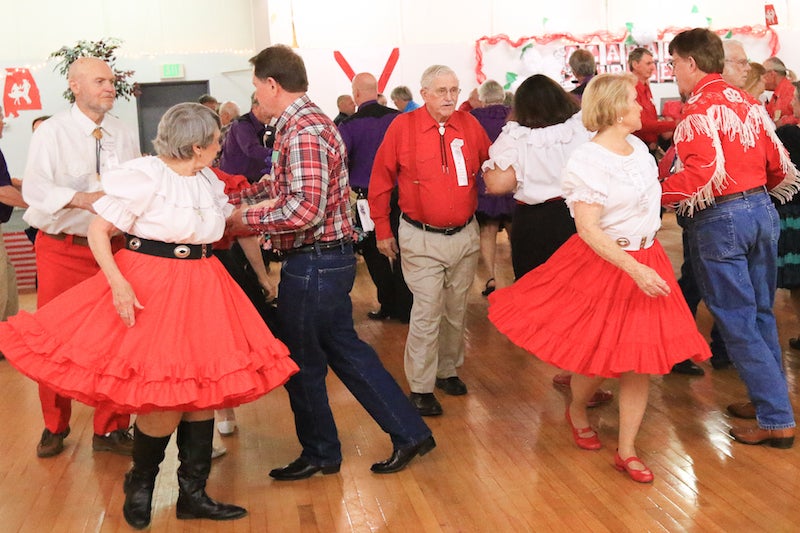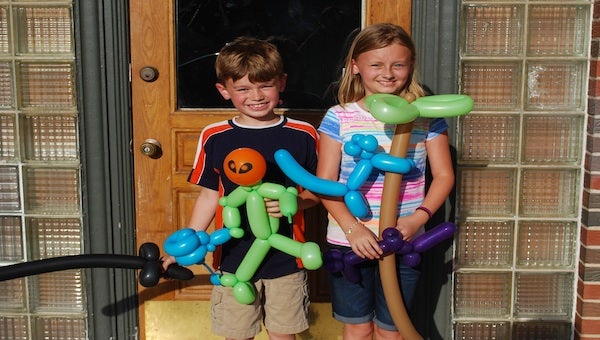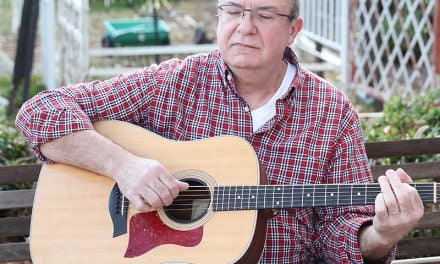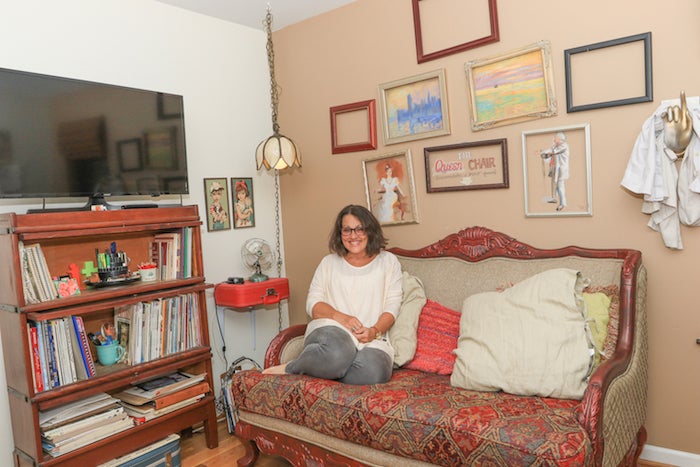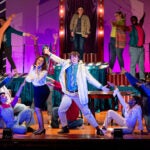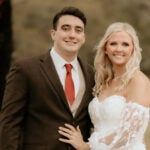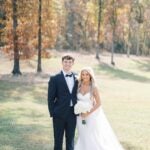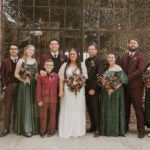Joe Lewellyn has been square dancing since he was 10 years old. His uncle played the fiddle, and Joe accompanied him to square dances until he joined the military when he was 19. That was in West Virginia in the 1940s.
With his wife, Edna, as his partner, Joe still enjoys the same square dancing he knew as a child today, more than 70 years later. He and Edna are longtime members of the Shelby Shufflers, a local square dance club that formed in the late 1970s, disbanded in 2014 and reunited almost two years ago. Joe served as the club’s first president.
“I’m 85 years old, and it keeps me going. That’s good exercise for an old man,” Joe says. “It’s all uniform. You can go anywhere in the U.S. and dance because it’s all uniform.”
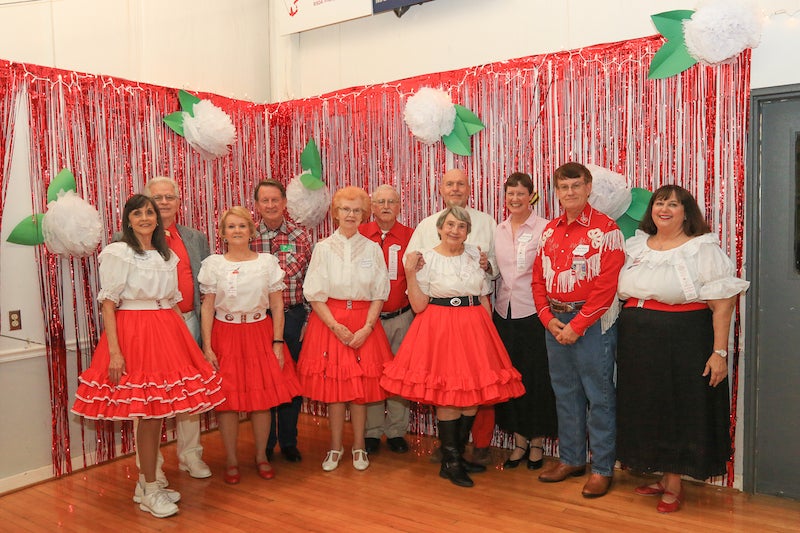
Joe was instrumental in teaching Annie and Paul Marrs how to square dance when they joined the club 10 years ago. Now, Annie is the cuer, a person who gives dancers directions during a choreographed line or round dance. Jerry Handley is the caller, whose job is similar to the cuer’s except he tells the dancers what movements he wants them to do as a song plays. If a person can listen and follow directions, he or she can square dance, Jerry says.
“Just about anybody can learn to square dance,” he says, and calls it a universal language. “Square dance is our official American folk dance. In square dancing, the choreography is done (by) the callers.”
Pat Game and her husband, Gene, have been with the Shufflers since the club reactivated. They also dance with the Pelham Promenaders. “We love square dancing,” she says. “It’s good, clean fun. Everybody loves each other. It’s great exercise to do.”
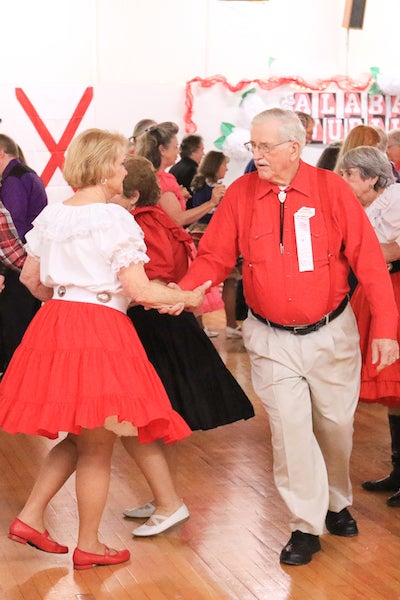
Shufflers member Mike Jarrett worked with Peggy Riley to reactivate the club in December 2016, according to the club’s history at shelbyshufflers.com. Jarrett started square dancing more than 30 years ago in Germany while he was in the military. “I like it because it’s healthy, and you make a lot of good friends.”
Despite its three-year hiatus, the club has marked multiple milestones over the years. In June 1985, the Shelby Shufflers became the first recipient of the Fun-D Raiser Award for the 34th National Square Dance Convention held in Birmingham.
As one of two dance clubs in Shelby County and 12 in the Birmingham metropolitan area, the Shufflers consists of about 25 active members and is looking to grow its membership. Although square dancing is supported by seniors more than any other demographic, the club is open to people of all ages and skill levels, Paul says, adding, “We’re always looking for members.”
“When you get on the floor, age has nothing to do with it,” says Brenda Hays, a member of the Yellow Rockers in Vestavia Hills. Hays, along with numerous other square dance club members, attended the Shufflers’ exhibition dance at the Hoover Senior Center in March.
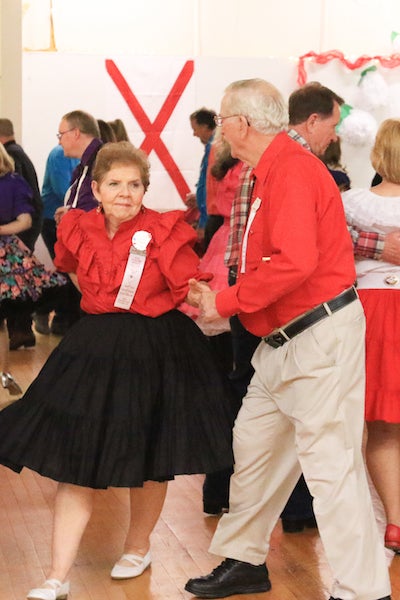
Holly Whitmire is the Shufflers’ president. Leading the club was a decision that came easily to her when she considered how much she enjoyed square dancing and wanted to see the club progress after its reactivation. “It’s worth the effort,” she says. “We are up and running again, and we’re having fun.”
Pat says the club gives square dance lessons at least once a year, welcoming anyone that wants to learn. “It takes dedication to learn, but it’s something you don’t forget. Having visitors is great fun.”
Joe echoes the sentiment. “We’ll try to teach anybody. You’ve got to like something we do, unless you’re just a city slicker.”
Square dancing is the purpose of the club, but socializing and eating rank high as priorities at the meetings, too. “Square dancing is a social thing. We eat, we dance, we have a good time,” Joe says. “We’re looking for members all the time. If you even think you’d like to square dance, we need to talk to you. We don’t want to quit.
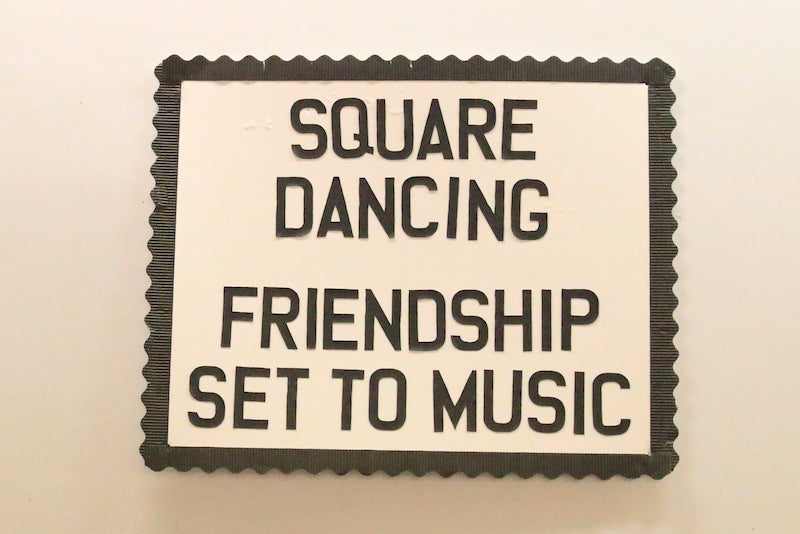
The Shelby Shufflers Square Dance Club dances the first and third Friday evenings of the month at the Heardmont Community Center. For more information, visit shelbyshufflers.com.
IN THE SQUARE
The Mainstream square dance program was established by CALLERLAB in 1975. It was the next step in codifying the Modern Western Square Dance movement after the work done by the Sets in Order American Square Dance Society in 1969 (publishing the Basic program with 50 calls) and 1971 (publishing the Extended Basic program with an additional 25 calls).
Starting in the late 1970s, the Mainstream Definitions Committee undertook to define each of the calls in the Mainstream program. Their work took several years and 13 drafts, and resulted in a set of definitions published by CALLERLAB that has received worldwide use and acceptance.
By 1995 it became clear that the existing training materials were insufficient. A complete rewrite was undertaken in 1999 to update these training materials while considering numerous comments, suggestions, and complaints.
Smaller class sizes, diminishing numbers of callers and rising costs of facilities became the norm by 2015. The talented Shelby Shuffler Club dancers with local caller Jerry Handley created the Facilitator Program to overcome these challenges. The first graduates of this training, Jim and Darlene Rainwater, Peter Bibbo, Marilyn Chiaramonte and Carol Griffith, will be in May/June 2018.
*Information provided by Paul Marrs.

